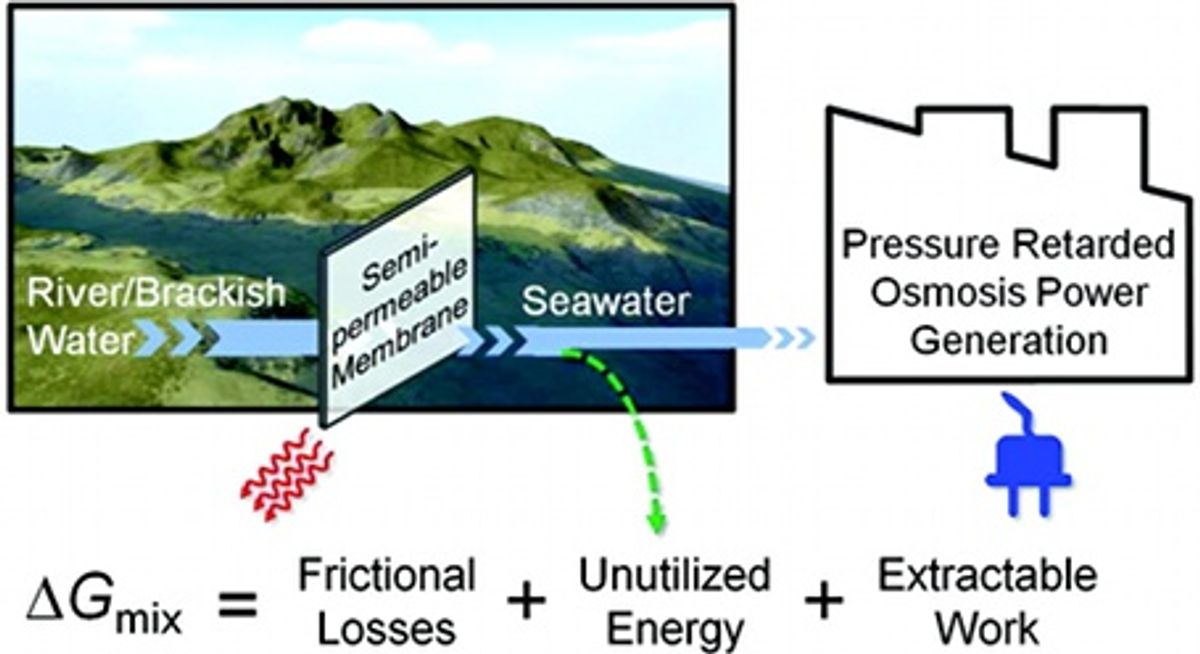There are a lot of rivers in the world, and a lot of places where those rivers discharge into an ocean. And according to a study published recently in Environmental Science & Technology, taking advantage of even 10 percent of those interfaces of fresh and salt water could provide more than 150 gigawatts of power.
The process is called pressure-retarded osmosis. Basically, a membrane divides fresh water coming in from the river with the salt water of the ocean or sea. The fresh water flows through the membrane due to the salinity gradient, and the pressure difference spins a turbine to generate electricity. Simple, no fuel required, and clean.
The total river discharge globally is about 37,000 cubic kilometers (somewhere in the vicinity of 10 quadrillion gallons); the new study suggests that if 10 percent of that could be exploited using pressure-retarded osmosis, it would generate 157 gigawatts of power. (For comparison: The U.S. has an electricity capacity of just over 1,000 gigawatts.) And that's 157 gigawatts of emissions-free power; the same amount from coal-fired power plants would release a billion tons of CO2 every year.
The authors of the study, Ngai Yin Yip and Menachem Elimelech of Yale University, might overshoot a bit with one number: they estimate that this power could provide electricity for 520 million people. They base that on the DOE's Energy Information Administration per-capita electricity consumption numbers, but somewhere between one and two billion people still lack electricity access. So, a couple of caveats to what seems like a really good idea: somehow using 10 percent of the world potential for river discharge power is an immense undertaking and extremely unlikely to happen on time scales that matter for emissions reductions; and no, 157 gigawatts will not provide power for half a billion people.
Still, this seems worth doing. There is one prototype facility already in place, in Norway, which we'll watch closely to see if it delivers on the concept's promise.
Image via Environmental Science & Technology
Dave Levitan is the science writer for FactCheck.org, where he investigates the false and misleading claims about science that U.S. politicians occasionally make.




